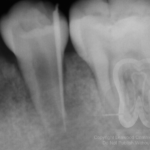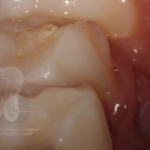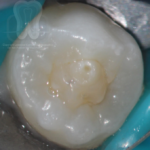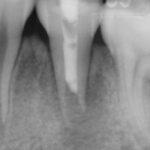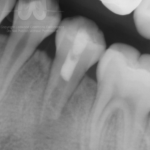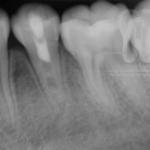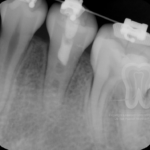Pulpal regeneration of an immature necrotic premolar with dens evaginatus.
A regenerative endodontic procedure was performed on an immature premolar with dens evaginatus. The patient was 10 years old and had a draining sinus tract associated with tooth #20. Treatment was performed in accordance with the protocol published by the American Association of Endodontists. (See images 1-9)
- Dens evaginatus, a rare dental abnormality, is characterized by presence of an accessory cusp. This cusp has a thin enamel layer overlying dentin and a narrow extension of pulp tissue. Shortly after the tooth is in function, pulp exposure often occurs, leading to premature necrosis and incomplete root development…precisely what we see in this case.
- Regenerative endodontic procedures are selected over conventional root canal therapies for necrotic teeth with incompletely developed roots, thin dentinal walls, and open apices. The goal here is to disinfect the root canal system, stimulate the release of particular growth factors from dentin, and recruit multipotent stems cells into the canal which will ultimately restore function of the pulp-dentin complex. This culminates in increases in root thickness and length, which makes the tooth less susceptible to fracturing down the road. My hope is to follow this case for years to come, and continue to see root development and retention of the tooth.
- For more information and excellent literature from the AAE on the topic: http://www.aae.org/publications-and-research/endodontics-colleagues-for-excellence-newsletter/regenerative-endodontics.aspx
We hope you found this case interesting. We’re sharing it because we enjoy discussing all things endodontics. If you are an endodontist or dentist with thoughts on this case, we would love to hear from you and add your contributions to this post.
Want to use our photos in a presentation or publication? Please email us and we’ll send you high-resolution original photos.

